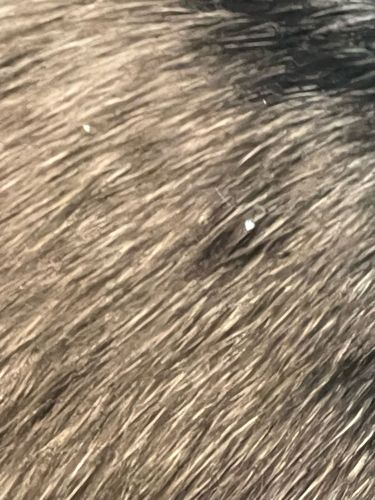Flea (possible, specifically flea eggs or larvae)
Scientific Name: Siphonaptera (order); specific species unknown without closer examination
Order & Family: Order: Siphonaptera, Family: Pulicidae (most common family for fleas affecting mammals)
Size: Eggs are typically 0.5 mm in length. Larvae can be a few millimeters long. Adult fleas are 1-4 mm.

Natural Habitat
Adult fleas live on the host animal (mammals and birds). Eggs, larvae, and pupae are found in the host's environment, such as bedding, carpets, cracks in floors, and outdoor shaded areas.
Diet & Feeding
Adult fleas feed on the blood of their host. Larvae feed on organic debris, including adult flea feces (flea dirt), skin flakes, and food particles.
Behavior Patterns
Fleas have a life cycle of egg, larva, pupa, and adult. Eggs are laid on the host but fall off into the environment. Larvae hatch from eggs and feed in dark, protected areas. They then pupate in a cocoon before emerging as adults. Adults are highly motivated to find a host for blood meals, exhibiting strong jumping capabilities to reach hosts.
Risks & Benefits
Potential risks include causing intense itching, allergic reactions (flea allergy dermatitis) in pets, and transmitting diseases like tapeworms (Dipylidium caninum) and, in rare cases, plague (Yersinia pestis) or murine typhus. They offer no known benefits to humans or ecosystems in domestic contexts.
Identified on: 10/7/2025